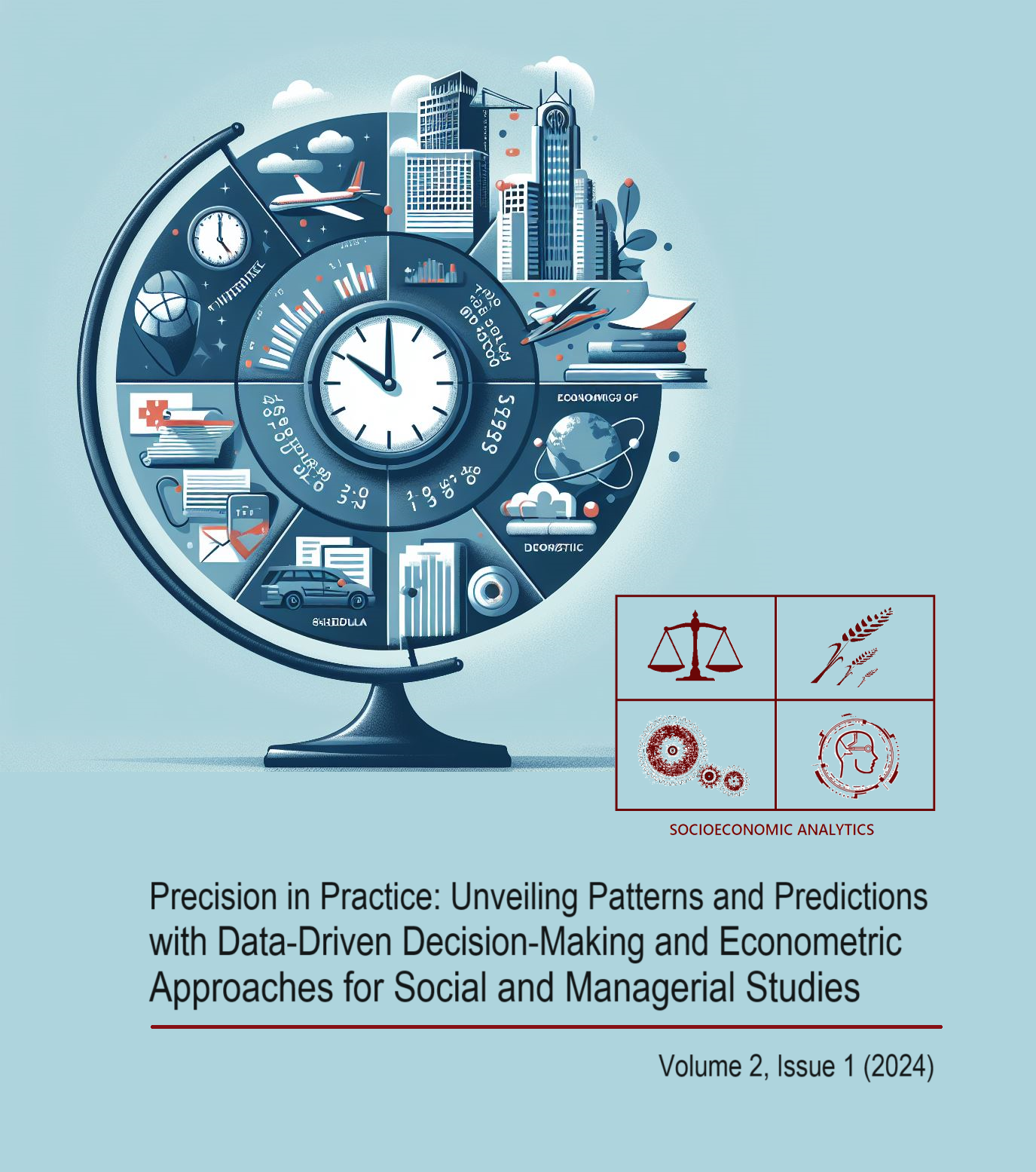Machine Learning Techniques for Classification of Stress Levels in Traffic
DOI:
https://doi.org/10.51359/2965-4661.2024.262686Keywords:
Artificial Intelligence, Machine Learning, physiological stress, traffic, traffic studies, Support Vector Machine, SVM, Bayesian Networks, Logistic Regression, transportAbstract
The aim of this study is to apply Machine Learning techniques for predicting and classifying the stress level of people commuting from home to work and also to evaluate the performance of prediction models using feature selection. The database was obtained through a structured questionnaire with 44 questions, applied to 196 people in the city of Curitiba, PR. The classification algorithms used were Support Vector Machine (SVM), Bayesian Networks (BN), and Logistic Regression (LR), comparatively. The results indicate that the classification of stress levels of new instances (people) as “high” or “low” can be performed using the LR technique (presenting the highest accuracy, 83.67%).
References
Blum, A. L., & Langley, P. (1997). Selection of relevant features and examples in machine learning. Artificial intelligence, 97(1-2), 245-271.
Deng, Y., Wu, Z., Chu, C. H., & Yang, T. (2012, August). Evaluating feature selection for stress identification. In 2012 IEEE 13th International Conference on Information Reuse & Integration (IRI) (pp. 584-591). IEEE.
Fernandez, R., & Picard, R. W. (2003). Modeling drivers’ speech under stress. Speech communication, 40(1-2), 145-159.
Guyon, I., & Elisseeff, A. (2003). An introduction to variable and feature selection. Journal of machine learning research, 3(Mar), 1157-1182.
Hennessy, D. A. (2008). The impact of commuter stress on workplace aggression. Journal of Applied Social Psychology, 38(9), 2315-2335.
Hennessy, D. A., & Wiesenthal, D. L. (1999). Traffic congestion, driver stress, and driver aggression. Aggressive Behavior: Official Journal of the International Society for Research on Aggression, 25(6), 409-423.
Hoffmann, M. H. (2003). Comportamento humano no trânsito. Casa do Psicólogo.
Kohavi, R., & John, G. H. (1997). Wrappers for feature subset selection. Artificial intelligence, 97(1-2), 273-324.
Liang, Y., Reyes, M. L., & Lee, J. D. (2007). Real-time detection of driver cognitive distraction using support vector machines. IEEE transactions on intelligent transportation systems, 8(2), 340-350.
Ministério da Saúde. (2017). Uma análise da mortalidade no Brasil e Regiões – Distribuição das principais causas de morte, Brasil – 1990, 1996 e 2004. Available in: http://portal.saude.gov.br/saude/visualizar. Accessed in sept. 2017.
Organização Mundial da Saúde. (2027). Publicações da OMS. Available in: http://www.who.int/eportuguese/countries/bra/pt/. Accessed on sept. 2017.
Rigas, G., Goletsis, Y., & Fotiadis, D. I. (2011). Real-time driver's stress event detection. IEEE Transactions on intelligent transportation systems, 13(1), 221-234.
Rimini-Doering, M., Manstetten, D., Altmueller, T., Ladstaetter, U., & Mahler, M. (2001, August). Monitoring driver drowsiness and stress in a driving simulator. In Driving assessment conference (Vol. 1, No. 2001). University of Iowa.
Russell, S. J., & Norvig, P. (2016). Artificial intelligence: a modern approach. Pearson.
Sharma, N., & Gedeon, T. (2012). Objective measures, sensors and computational techniques for stress recognition and classification: A survey. Computer methods and programs in biomedicine, 108(3), 1287-1301.
Singh, R. R., Conjeti, S., & Banerjee, R. (2013). A comparative evaluation of neural network classifiers for stress level analysis of automotive drivers using physiological signals. Biomedical Signal Processing and Control, 8(6), 740-754.
Sohn, S. Y., & Shin, H. (2001). Pattern recognition for road traffic accident severity in Korea. Ergonomics, 44(1), 107-117.
Sun, F. T., Kuo, C., Cheng, H. T., Buthpitiya, S., Collins, P., & Griss, M. (2012). Activity-aware mental stress detection using physiological sensors. In Mobile Computing, Applications, and Services: Second International ICST Conference, MobiCASE 2010, Santa Clara, CA, USA, October 25-28, 2010, Revised Selected Papers 2 (pp. 282-301). Springer Berlin Heidelberg.
Tango, F., & Botta, M. (2013). Real-time detection system of driver distraction using machine learning. IEEE Transactions on Intelligent Transportation Systems, 14(2), 894-905.
Tawari, A., Sivaraman, S., Trivedi, M. M., Shannon, T., & Tippelhofer, M. (2014, June). Looking-in and looking-out vision for urban intelligent assistance: Estimation of driver attentive state and dynamic surround for safe merging and braking. In 2014 IEEE Intelligent Vehicles Symposium Proceedings (pp. 115-120). IEEE.
Wiesenthal, D. L., Hennessy, D. A., & Totten, B. (2000). The Influence of Music on Driver Stress 1. Journal of applied social psychology, 30(8), 1709-1719.
Woltermann, B., & Schroedl, S. (2003). U.S. Patent No. 6,599,243. Washington, DC: U.S. Patent and Trademark Office.
Zille, L. P. (2005). Novas perspectivas para abordagem do estresse ocupacional em gerente: estudos em organizações brasileiras de diversos setores. Belo Horizonte: CEPEAD/FACE/UFMG.
Downloads
Additional Files
Published
Issue
Section
License
Copyright (c) 2024 Amanda Trojan Fenerich, Egídio José Romanelli, Rodrigo Eduardo Catai, Maria Teresinha Arns Steiner

This work is licensed under a Creative Commons Attribution-NonCommercial-NoDerivatives 4.0 International License.
Authors who publish with Socioeconomic Analytics retain the copyright of their work and agree to license it under a Creative Commons Attribution-NonCommercial-NoDerivatives 4.0 International (CC BY-NC-ND 4.0) license. This means that the work can be shared, copied, and redistributed in any medium or format, as long as it is not used for commercial purposes, and the original work is properly cited. The work cannot be changed in any way or used to create derivative works.










